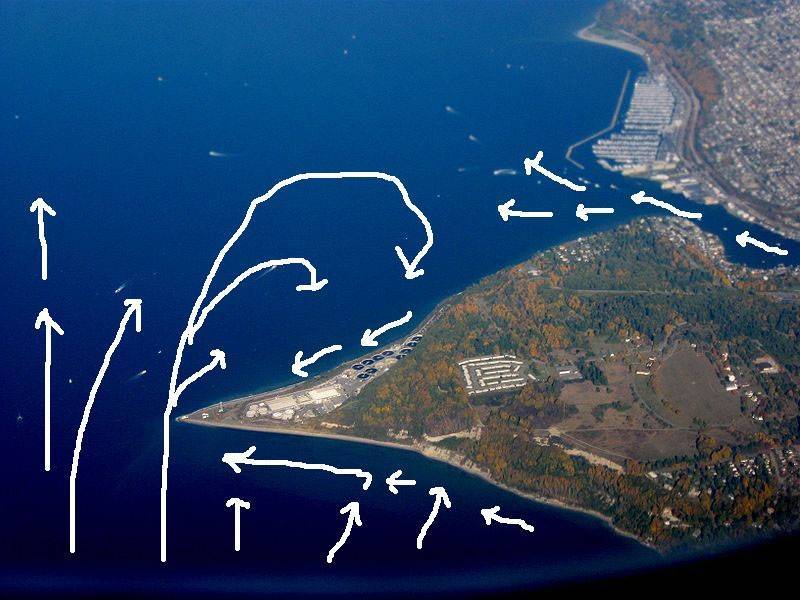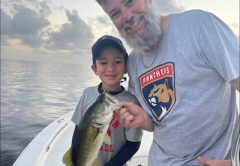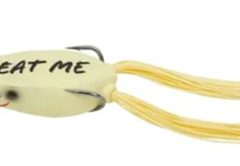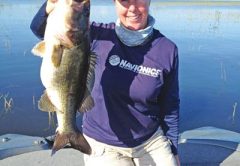How many times have you said or heard the words ‘this wind sucks,’ probably more than you want to remember. Unless you’re a fair weather fishermen, sooner or later you’ll find yourself in a stiff breeze and then what are you going to do. You can either bitch about the wind, return to the boat ramp, or you can use the wind to your advantage and have a great day of fishing, after all, wind and current can be a fishermen’s best friend.
First let’s set some parameters here, we are talking about shallow water lakes like Lake Okeechobee, Lake Istokpoga, and similar lakes. Big water lakes like the Great Lakes, the deep valley lakes, and the oceans behave differently due to their depths and sizes.
Wind, whether it is a light breeze or a stiff gale creates current and current creates a change in conditions. Current can relocate and concentrate plankton which are then followed by baitfish; current can stir up the bottom substrate and shoreline vegetation dislodging small insects and invertebrates such as crawfish and other crustaceans; and current will carry with it floating vegetation which is home to small baitfish.
Strong and sustained winds will have a significant impact on the quality and quantity of water within a specific area of the lake. Under sustained conditions, the depth of the lake on the windward side can significantly increase in depth while dropping on the leeward side of the lake. The winds can churn up the water to such a degree as to lift silt and sediment off the bottom and increase the turbidity of the water which can be pushed into areas previously holding clear water. Strong winds and wave action add oxygen into the water which invigorates baitfish and predators alike. Wave action from the wind churns up the surface of the water allowing less light to enter the water column which entices light sensitive predators to move about more freely in their environment. So other than a wet and bumpy boating experience, wind and wind induced current are generally your friend.
Besides direction and strength of the wind, there is a seasonality to the understanding of the wind and wind-induced currents. In the winter time here is south-central Florida, the strong north winds of a cold front will drastically cool off the first few feet of surface water. If driven by sustained winds this cold water will flood the shallows of the windward side of the lake and drive resident fish out into the warmer deep waters. As the cold front passes, high pressure generally builds in and the winds will shift to the east. During these times, wind and current will work against you. You’ll be better off searching for warm pockets of water not influenced by the changing conditions. On the other hand, during the summer when winds are generally lighter and prevail out of the east to southeast, the water temperatures are considerably higher so wind and current from any direction are a welcome change to the fish.
So how do the baitfish and bass react to the wind and current? Under moderate conditions baitfish will concentrate closer to shore. This is not because they are being driven by wave action to the shore, this is due to the fact that their food source, zooplankton, is being driven to shore as well as the floating plants that provide them shelter are being pushed to shore. So where the baitfish go, so follows the bass.
When fishing windy conditions and wind driven current, bass will generally point their noses into the current and wait for food to be carried towards them. Therefore you should cast into the wind and current and retrieve you lure as if the baitfish is swimming with the current. In doing this it is important to stay in contact with your bait, that is, don’t let your line bow into the current or wind. This is not to say you should never cast with the current for many times the sudden appearance of a baitfish from behind will induce a strike. You’ll need to work your lure slower and with more frequent pausing and with a little back drop if you can. For unless you have a superman bait, most small baitfish will have a struggle swimming against a strong current and the object of an artificial bait is to mimic the life-like actions of a live baitfish.
When fishing currents, you’ll be fishing for opportunistic feeders so choose baits that cover lots of water. Spinner baits, crank baits, jerk baits, chatter baits, swim baits and even top water baits can cover water quickly. If fishing in turbid water, add flash, noise and vibration to your presentation. If fishing a gentle current, cast into the current and near the deeper pockets of the channel. If the water is ripping through a cut or channel, stick to the sides, eddies and downward side of vegetation. If the water boils in the middle of the current, this is an indication of an obstruction in the channel and there is a good chance a bass is lying in wait. When fishing a cut in the vegetation that opens up into a small bay or pooling area, don’t neglect the middle of the bay. Bass will not only hold tight to the cut where the action is, they’ll also lay in the calmer waters of the bay and pick off anything that got past the first line of attack subs.
If you find a strong current moving into a cut or at the junction of a series of boat trails, look for and fish the counter current. The counter current is a slower moving current that runs opposite the main current. For those who fish ocean inlets or have experienced a rip tide on the beach, as a large volume of water moves in, there is always displaced water moving out in the opposite direction. Fishing the edge of these two water flows can be extremely productive.
When casting into the wind, you may need to make some adjustments to your equipment. If the wind is strong, minimize your overhand casting and switch to a side arm swing. Keeping the rod tip down will keep your bait closer to the water and out of the wind. If you’re using a baitcaster you may want to tighten down on your spool adjustment, this may reduce your casting distance but it should also decrease the number of back-lashes you get. Use your thumb to control the pay-out of your line and stop the cast with your thumb before your lure hits the water. Let the momentum of your lure straighten out your line. If still having issues with the wind, reduce the diameter of your line by going to a lighter line strength and-or increase the weight of your lure. Keep in mind that as you retrieve your lure with the current, your line take-up will be faster and your bait will spend less time in the strike zone so adjust your lure weights accordingly.
Fishing in wind and wind driven current can definitely be a challenge but it can also be very rewarding. Those anglers that master the wind and current can conquer Lake Okeechobee. So the next time you’re out on the lake and the wind picks up, you can retreat to the thick grass mats where the waves and currents are moderated or you can think like a bass and move to where the current will deliver food to your door step.
[easy-social-share]







